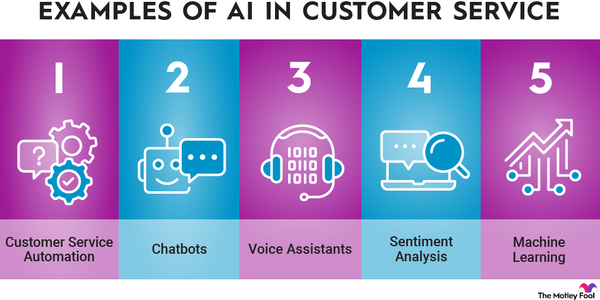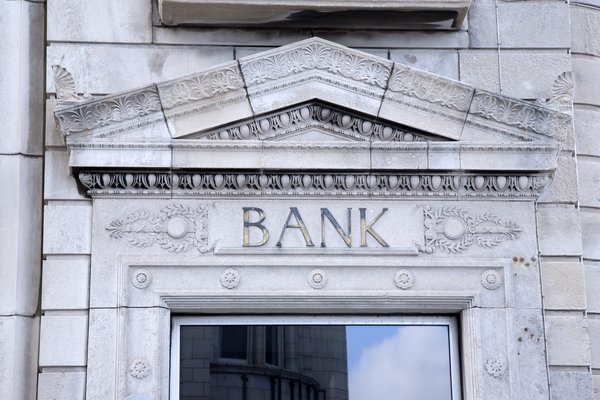Canva has built a leading design and communications platform and is an early adopter of artificial intelligence (AI). Its AI-powered tools and easy-to-use software enable anyone to create graphics, videos, and presentations. For instance, Canva's Magic Eraser enables users to easily remove anything from an image.
And the company is just scratching the surface of its potential for using generative AI to empower people to create more.

The company is emerging as a major competitor to Adobe (ADBE 0.87%) in the design software space. It's growing fast and has already amassed over 135 million monthly active users. That vast and growing user base has enabled Canva to generate lots of recurring revenue. And, unlike many start-ups, it's already solidly profitable.
Canva's disruptive capabilities have many investors eagerly anticipating its initial public offering (IPO). Here's a step-by-step guide on how you can invest in its stock before it goes public, as well as some alternative options to consider while awaiting its IPO.
IPO
Is Canva publicly traded?
Is Canva publicly traded?
Canva wasn't a publicly traded company as of late 2023. It has yet to complete its IPO.
When will Canva IPO?
When will Canva IPO?
Canva didn't have an IPO on the calendar as of late 2023. However, in an interview with Barron's in early 2023, the company's chief operating officer, Cliff Obrecht, said an IPO "becomes an inevitability at our size."
While an IPO is on the horizon, Obrecht said it's "not on the imminent horizon." That's because it's not a good time to go public, given the prolonged freeze in the IPO market, especially for technology-related companies.
How to buy
How to buy Canva stock
Since Canva isn't public yet, you can't buy shares in your brokerage account. However, interested investors can invest in a fund holding pre-IPO shares. For example, The Fundrise Innovation Fund made a $6 million investment in Canva in September 2023. The fund is open to all investors and has a low minimum investment of $10 per share.
Investors seeking more direct exposure to the trends driving Canva's growth can consider investing in a publicly traded alternative. Here are three Canva alternatives investors can buy while they await the company's IPO.
Adobe
Adobe (ADBE 0.87%) is the behemoth in the design software space. It sells a suite of products to help designers create visually stunning graphics. It agreed to buy web-first collaborative design platform Figma for $20 billion in 2022 to help expand its reach and fend off upstart competitors like Canva.
Autodesk
Autodesk (ADSK 0.71%) makes software for architects, builders, engineers, designers, manufacturers, 3D artists, and production teams. Its software helps customers create better designs to make better products. The company's product offerings focus on four areas: architecture, engineering, and construction; AutoCAD and AutoCAD LT; manufacturing; and media and entertainment.
Microsoft
Microsoft (MSFT 1.82%) is a titan in the technology sector. Its products span the productivity, cloud computing, social networking, and gaming sectors. It is also an early leader in AI and has invested billions into ChatGPT developer OpenAI. It's integrating AI powered by the company into its products to help more people leverage AI to be more productive.
Cloud Computing
Investors interested in one of these Canva alternatives can buy shares in any brokerage account. Here's a step-by-step guide to investing in these software stocks.
Step 1: Open a brokerage account
You'll have to open and fund a brokerage account before buying shares of any company. If you still need to open one, here are some of the best-rated brokers and trading platforms. Take your time to research the brokers to find the best one for you.
Step 2: Figure out your budget
Before making your first trade, you'll need to determine a budget for how much money you want to invest. You'll then want to decide how to allocate that money.
The Motley Fool's investing philosophy recommends building a diversified portfolio of 25 or more stocks you plan to hold for at least five years. You don't have to get there on the first day, though. For example, if you have $1,000 available to start investing, you might want to begin by allocating that money equally across at least 10 stocks and then grow from there.
Step 3: Do your research
It's essential to thoroughly research a company before buying its shares. You should learn about its competitors, its balance sheet, how it makes money, and other factors to make sure you have a solid grasp on whether the company can grow value for its shareholders over the long term.

Step 4: Place an order
Once you've opened and funded a brokerage account, set your investing budget, and researched the stock, it's time to buy shares. The process is relatively straightforward. Go to your brokerage account's order page and fill out all the relevant information, including:
- The number of shares you want to buy or the amount you want to invest to purchase fractional shares
- The ticker symbol (e.g., ADBE for Adobe, ADSK for Autodesk, MSFT for Microsoft)
- Whether you want to place a limit order or a market order (The Motley Fool recommends using a market order since it guarantees you buy shares immediately at the market price.)
Once you complete the order page, click to submit your trade and become a shareholder of one of these Canva alternatives.
You would follow a similar blueprint to buy an IPO stock like Canva when it goes public. Once shares become available, select Canva's chosen stock ticker to buy shares through your brokerage account.
Profitability
Is Canva profitable?
As a privately held company, there isn't a lot of publicly available information about Canva's profitability. However, Canva "has long been profitable and cash-flow positive," according to the Fundrise Innovation Fund, and The Wall Street Journal claims the company has been profitable since 2017.
Canva is growing its revenue rapidly, which bodes well for future profitability. Fundrise noted that Canva had doubled its sales to an annualized run rate of more than $1.6 billion in late 2023. Rapidly rising revenue and earnings are keys to growing shareholder value over the long term.
Should I invest?
Should I invest in Canva?
Canva isn't public yet and likely won't complete an IPO in the near term. That gives investors ample time to research the company. This research is crucial because it could confirm your investment thesis that Canva will be a good stock to buy once it goes public, or it might change your mind.
As part of the research process, here are a few things to consider that might lead you to buy shares when the company goes public:
- You think Canva can unseat Adobe as the leader in design software.
- You think the company's adoption of AI will pay off over the long term.
- You believe the company can continue growing its revenue and profits at a brisk pace.
- You like to invest in founder-led companies.
- You're comfortable investing in stocks that could be volatile, which is typical of an IPO stock.
- You think Canva can grow into its already lofty pre-IPO valuation.
On the other hand, here are some factors that might lead you not to buy shares of Canva when it goes public:
- You're worried Adobe will pressure Canva by releasing new, more innovative, and lower-cost solutions.
- You're not sure AI will be a big growth driver for the company.
- You'd prefer not to invest in highly volatile stocks, which will likely be true for Canva when it completes its IPO.
- You're more of a value investor and think Canva's roughly $25 billion pre-IPO valuation is rich for a company only generating $1.6 billion in annual revenue.
ETF options
ETFs with exposure to Canva
Since Canva isn't a publicly traded company, it's not in many passive investment funds, such as exchange-traded funds (ETFs).
Exchange-Traded Fund (ETF)
However, there are a couple of publicly available investment funds with exposure to Canva:
- Fundrise Innovation Fund: The Fundrise Innovation Fund is a venture capital fund open to all investors. The fund held 19 assets in late 2023, including privately held companies, like Canva and Databricks, and the corporate bonds of publicly held companies, such as Twilio (NASDAQ:TWLO) and Block (SQ 2.32%).
- T. Rowe Price Blue Chip Growth Fund (TRBCX -0.94%): The mutual fund managed by T. Rowe Price (NYSE:TROW) invests in a range of growth-focused companies. Although it primarily owns publicly traded stocks, it has also invested $99.1 million into Canva.
Related investing topics
The bottom line on Canva
Canva is one of the more hotly anticipated IPOs. The design software company is growing briskly as it takes on industry behemoth Adobe. It's also an early adopter of AI, which could be a massive growth driver. These features make it an interesting stock to watch as it prepares to go public.
FAQs
Investing in Canva FAQs
Does Canva have an IPO?
Canva had not completed an IPO as of late 2023. Although the company didn't plan to complete an IPO anytime soon, it sees that happening eventually, given its large size.
Is Canva a private or public company?
Canva was still a private company as of late 2023. It hasn't completed an IPO and doesn't have plans to go public in the near term.
How do I buy pre-IPO stock?
Most investors can't buy pre-IPO shares of a company like Canva. However, they can gain exposure to the company through a fund that holds pre-IPO shares. For example, the Fundrise Innovation Fund made a $6 million investment in Canva in late 2023. The fund is open to everyone and has a low minimum investment.
What is the valuation of Canva stock?
Canva last completed a funding round in September 2021, which valued the company at $40 billion. However, several of the company's investors have since written down their investments from that level.
Australian venture capital fund Blackbird adjusted its holding value by 36%, implying a $25.6 billion valuation, while T. Rowe Price slashed its holding value by 67.6%, putting Canva's valuation closer to $13 billion. Meanwhile, according to the Information, the company brought in two new investors in late 2023 at a $25.5 billion valuation, lining it up with Blackbird's valuation adjustment.
































































































































































































































